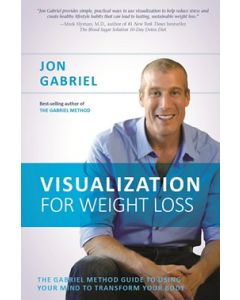Art of Healing
$28.95
In stock
SKU
9781608681853
In 1979 Dr. Bernie Siegel, a successful surgeon, took a class from Dr. Elisabeth Kubler-Ross that focused on the use of crayon drawings as part of the healing process, especially for patients facing life-threatening diseases such as cancer.
The understanding of healing and medicine in North America would never be the same. And, without doubt, the way Bernie Siegel treated and related to patients changed drastically as he incorporated many techniques that were laughed at by the medical community. In fact, when he offered a free seminar about these techniques through his clinic, only a few people showed up, and he called these patients “exceptional.” Soon, he formed a group called Exceptional Cancer Patients (ECaP) based on “carefrontation,” a loving, therapeutic confrontation that facilitates personal change, both physically, mentally, and spiritually, and helps the patient and doctor treat all aspects of the patient’s illness. The healing and miracles attracted attention, and today Bernie Siegel is one of the best-known and most beloved of all doctors, publishing his book Love, Medicine & Miracles and facing the scorn of the medical establishment along the way. Now, if Bernie Siegel offers a workshop, people come in droves. What Bernie discovered and began sharing with patients is the simple fact that our bodies are healing machines. Yes, they need help in the form of antibiotics, casts for broken bones, stitches for deep wounds, and surgery, radiation, and chemotherapy for cancer. But not always and not only. Our bodies know how to heal themselves, if we can sometimes get out of the way and other times get to the core of why we are sick, and other times if we can assist them with tools such as visualization, dreamwork, laughter, and, yes, spontaneous drawing. A box of crayons and sheets of paper became Bernie’s favorite therapeutic tools. Bernie has used art in his work with patients since that class in 1979, and the results demonstrate again and again that allowing ourselves to draw, preferably with crayons, will help us to tap into underlying issues that may prevent our healing and may hold us back from acceptance. What sets us apart from other species, Bernie writes, is our use of symbols. Symbols have profound impact on our thoughts, our beliefs, and our lives. The use of symbols, including language, has been part of being human from the first cave drawing to the latest high-tech device, yet we often forget the underlying power they have. Drawings allow us to tap into our own personal use of symbols, to represent what our subconscious believes by creating images on paper. The drawings in this book reveal through symbolic representation what some medical students actually thought their jobs would be; how a patient viewed the surgeon and chemotherapy; how an individual would respond to various treatment options; what the family had to contribute toward healing, and much much more. Sections of the book explore how to interpret and use the drawings, discussing such things as colors, the anatomy of the people in the drawings, houses and family members and how they are represented (facing forward; windows, etc), numbers used or the number of animals depicted, and how the way we present ourselves in “self-portraits.” For example, one patient awaiting surgery depicted themselves in a barren room, no other humans, with a huge instrument about to invade their body. Compare this to the woman who drew herself in the palm of a large human hand, with a surgeon standing over her holding her hand and windows with birds and trees and sunshine visible outside. The use of drawing in Bernie’s practice soon proved to be just as effective as many healing modalities and complementary to all treatment options. They helped patients discover the physical, psychological, and emotional aspects of healing and guided them toward the best choices and options for their particular situation. They helped heal the whole person, and in the process healed families, too. Inner knowingness, as revealed through the practices in this book, speaks a powerful language and can be used for prevention, treatment, diagnosis, and prognosis of an illness, as well as emotional problems or decisions an individual or family must make, including where should I go to college, whom should I marry, should I take chemotherapy or eat vegetables, and more. Very often what one fears may be portrayed as very therapeutic and the conflict between intellect and intuition resolved to the benefit of the patient. Because Bernie is both a scientist and a healer, he explains how these aspects of healing interact and how to use drawing and other techniques to support choices in medical treatment. In some cases, the drawings demonstrate that it is time to let go of treatment, for example, or that chemotherapy is the best option. Healing is an art in many ways, and using our human tendency to create art will enhance the journey toward wellness.
Publisher: NEW WORLD LIBRARY
PAPERBACK
ISBN: 9781608681853
Dimensions: 21.60 and 14.00 cm
| Author | Siegel, Bernie S. |
|---|---|
| ISBN | 9781608681853 |
Write Your Own Review
Frequently Bought Together
-
This Item:
$28.95
-
Longevity Bible, The
$22.95
-
Shaman Within
$36.99
-
Encyclopedia of Herbal Medicine, Updated
$65.00
-
SUPERFOODS
$24.95
Total price
Customers Who Bought This Item Also Bought










